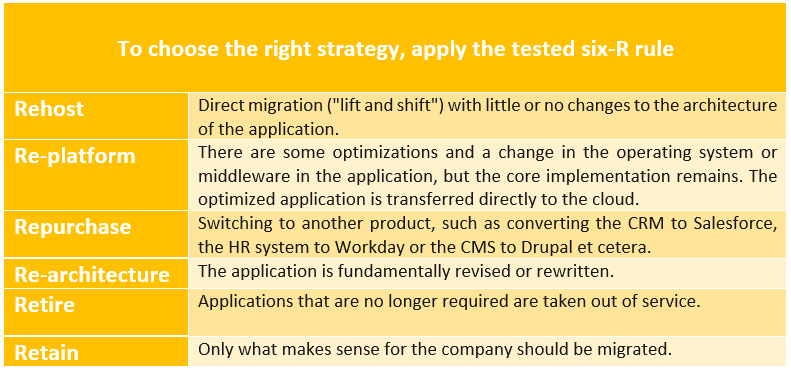Preparing for Cloud Migration

Companies that migrate to the cloud are preparing for a digitization era in which cloud technology not only enables trends such as mobile working but also supports companies in developing new business models and services. The migration of existing software applications to the cloud is motivated by a variety of reasons: lower IT workload, cost savings, greater agility & the need for mobility.
According to Gartner, the global Public Cloud Services Market will grow by 23.1% and reach $397.4B by 2022, up from $270 billion in 2020. Nevertheless, 80 percent of the applications are still running on-premises today. With this in mind, many companies are only just beginning their path to the cloud, and cloud migrations will be an essential part of their IT strategy over the next few years.
Moving systems to the cloud is a challenge that should not be underestimated for many companies – especially during the business-critical migration phase. Inadequate preparation and a lack of expertise can quickly overload existing IT capacities and lead to steep increases in costs. It’s recommended not to ignore the security risks and unnecessary costs. Among other things, it is about how the company sets expectations correctly and maintains its added value during the transition phase.
Preparing for the cloud migration
First of all, a competent team should be put together that is responsible for the upcoming migration of the selected data and the IT structures of the cloud. This should consist of experts with complete knowledge of the target cloud services and the applications to be migrated. The team leader should focus on implementing the business requirements, managing potential technical obstacles, and minimizing risks.
The team leader assumes the role of an “architect” who first defines the strategy and develops a migration plan with his team in order to supervise the migration. Every cloud and migration strategy should therefore be backed up with profound specialist knowledge.
The next step is to perform a complete inventory and classify the applications to be migrated. The following questions should be considered here: Should the standard applications or special legacy apps be migrated? Should the operating system be updated, the application modernized, or should PaaS services such as managed databases be used? It may even be a good idea to shut down some applications entirely and not migrate them at all. After all, a migration plan can only be developed after an in-depth inventory, analysis, and evaluation of each individual application.
Visualize key figures and dependencies
However, a comprehensive inventory does not only consist of a mere listing of the applications. In addition, IT managers should visualize the IT dependencies and evaluate the applications accordingly. It is important to identify relationships between the building blocks of an application and supporting internal services such as Active Directory and external resources. Supporting services must be set up on the target cloud platforms before the application migration process can begin. Applications with simpler dependencies or those that mainly use external services should be moved first. All applications with more complex dependencies should only follow later, as soon as the corresponding dependencies are available in the target cloud.
Last but certainly not least, it is important to determine and record economic and technical key figures (KPIs) during the preparations in order to be able to relate the performance of an application to one’s own expectations. There are basically many meaningful metrics that can be considered for cloud migration. In any case, it makes sense to use metrics that make the problems as well as the success, benefits, and added value of a migration project visible. KPIs for user experience, performance, capacity utilization, and relevant business metrics are recommended. As soon as the KPIs are established, the baseline with which the data comparison should take place must be defined. It should be ensured that sufficient data is collected to be able to take special events such as seasonal fluctuations into account for operational decisions. The collection of data should be automated as far as possible in order to be able to guarantee timely reporting.
